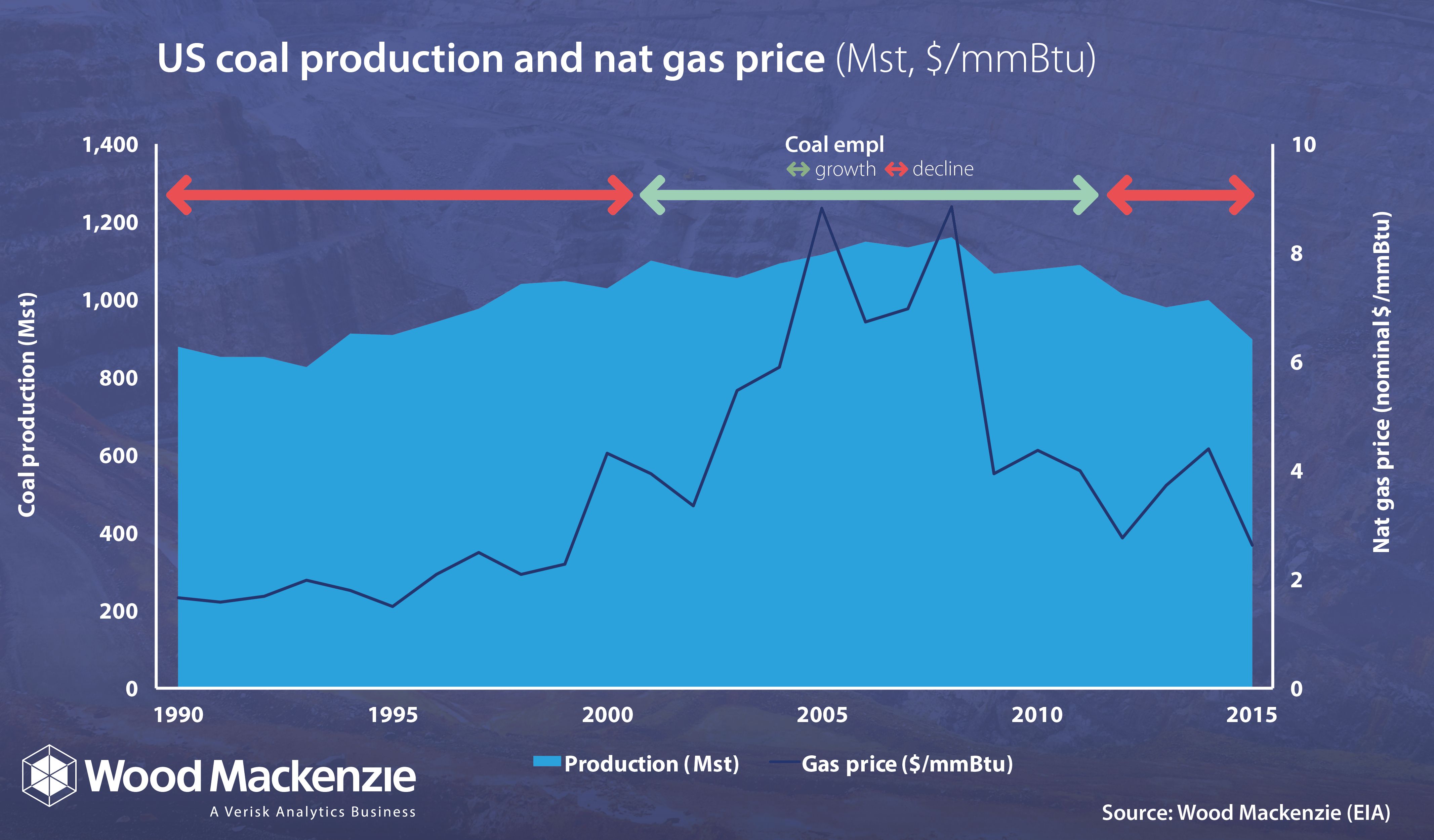During his campaign, Donald Trump made numerous promises to coal miners. Are Trump’s goals for coal just empty promises -- or is his vision for the industry more than hyperbole?
First, what is Trump saying? He claims he can rejuvenate the coal industry. He claims that China and weak domestic policy are destroying the industry; he vows to unchain it and restore its growth. Above all, Trump promises to put coal miners back to work.
Trump’s declarations have created debate within an industry that desperately needs some support. He is not the first presidential candidate in history to promise big -- but is a resurgence in U.S. coal even possible?
We review measures a President Trump could take to stabilize the coal industry and slow its eventual decline.
Nine steps a President Trump could take to help the U.S. coal industry
There are things a President Trump could do to support the coal industry. Knowing that a less-burdened and lower-cost coal product will stabilize demand and slow its decline, a future President Trump could help coal in a slew of ways.
- Modifying the "endangerment finding." This is the legal underpinning for many environmental regulations, including the Clean Power Plan (CPP) and plans to tax CO2. A Trump administration could review the Obama EPA’s finding. A new finding more favorable to coal would remove the underpinning for much of EPA’s planned action.
- Ending all administration work on non-final environmental rules affecting coal. Trump could order his administration to end all activity on draft environmental rules or those undergoing court challenges, which would end legal defense of the CPP and the Clean Water Act.
- Rolling back existing coal-impacting EPA regulations. Trump could review all EPA rules and eliminate those that impose “any undue cost” on business. Although difficult, and most certainly an action that would involve the courts, an attempt would send a message of support to coal.
- Phasing out subsidies for renewable energy. Were Trump to support a unification of subsidies for mature solar and wind technologies into a single short-term subsidy, he would provide coal with the opportunity to compete. (For more on this topic, please see our insight: The U.S. Wind Energy Production Tax Credit – Time for a Change.)
- Refusing to ratify the COP21 agreement. Trump could refuse to ratify the Paris COP21 agreement, thereby reducing the likelihood of its viability. (For more about this subject, see our insight: Permanent U.S. Ratification of the COP21 Agreements Not a Certainty.)
- Ending the moratorium on federal coal leasing. Trump could instruct the Secretary of the Interior to end the Obama administration’s review of the federal leasing program. Western coal miners in the PRB and in Colorado and Utah would be free to pursue new leases for their operations under existing rules. (For more about this issue, see our insight: Impact of a Federal Coal Lease Program Reset.)
- Reducing federal severance, royalties and tax rates. With a fully Republican Congress, Trump will be empowered to lower the federal impact on coal by reducing federal tax and royalty rates on the resource.
- Transferring environmental policy dominance back to the states. Trump could endeavor to weaken federal dominance on environmental issues. He could act to limit the so-called "sue and settle" practice, whereby the EPA chooses to negotiate with a claimant rather than going to court.
- Ending the government review of self-bonding practices. If elected president, Trump could instruct the OSM to end its self-bonding review. Mining companies would be relieved of the extra financial burden were self-bonding to be eliminated.
Some Trump campaign promises will be difficult to deliver
While Trump means to help, he may not have the means to help. A divided U.S. citizenry is similarly reflected in its divided government, leaving the president just one reliable tool in his arsenal -- sole executive action.
But while executive action is a tool often used by presidents, it is rarely used to address highly significant and contentious issues, since any action taken by one president can easily be undone by the next.
Still, precedent is being set for using executive action on big environmental issues. Soon, President Obama is very likely to use executive action to ratify the Paris climate accords. In this way, it seems, the people’s energy and environmental business gets done, then undone, then done again, and so on. The coal industry is attached to the end of the yo-yo of presidential action.

Mr. Trump is a powerful personality, possibly able to alter the dialogue and shift policy, for a time. But would a President Trump be powerful enough to alter the future for coal?
In addition to the political issues, he’ll face a trifecta of strong technical headwinds -- rising coal mine productivity, low-cost energy alternatives and growing U.S. energy efficiency.

America's energy production is evolving. Natural gas and renewables are taking market share from an increasingly less labor-intensive coal industry serving a progressively less energy-intensive global economy. This is a recipe for coal industry decline that makes long odds for industry renewal.
It is this situation that a President Trump would seek to alter. There are steps he could take to improve coal’s fortunes. But to make his campaign coal promises more than empty rhetoric, he’d need to use all his persuasive power and make judicious use of executive action.
***
Andy Roberts is the research director for global thermal coal markets at Wood Mackenzie. This piece was originally published on Wood Mackenzie's blog.



